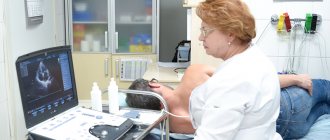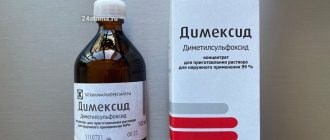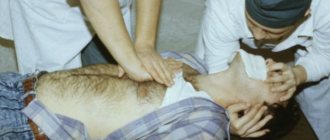Diabetes mellitus requires a person to pay increased attention to health. In particular, the patient must keep the level of caxapa in the blood under control. The saturation of the body's cells with energy depends on this. Their starvation can lead to dangerous consequences, including diabetic coma and death.
To measure your sugar levels you no longer need to visit a clinic. There are special devices - glucometers that are suitable for home use. They do not require medical skills and allow you to track your sugar yourself. We will figure out what types of glucometers there are and what to consider when choosing.
Types of glucometers
The classification is based on the operating principle of the device. Devices for measuring blood sugar levels are divided into invasive and non-invasive. The first involves pricking a finger and collecting capillary blood. They are:
- photometric;
- electrochemical;
- coulometric.
Express test strips are considered separately from invasive glucometers. This is not a device, but rather an indicator of sugar content. Although you also need to pierce your finger to use it.
For children and elderly patients, it is more convenient to use non-invasive ones. They do not require blood for analysis, so the measurement is absolutely painless. This category includes sensor devices (or Raman devices), including laser ones. They determine glucose levels based on subjective factors, so their accuracy is somewhat lower.
Types of lancets
There are two large groups of piercers, which differ from each other in operating principles and price:
- automatic type;
- universal type.
Universal needle for glucometer
Universal needles fit all portable glucose meters. The only device to which the lancets of this group are not adapted is Accu Chek Softlix. This device is quite expensive, so its use is not so common.
Universal scarifiers - a widely used and more budget option
A universal type needle causes minimal damage to the skin when punctured. The device is inserted into the handle included with the glucometer. Manufacturers can make this type of lancer more convenient by adding the function of adjusting the depth of invasion. This is necessary when measuring sugar levels for young children.
Automatic Lancing Lancet
An automatic lancing device is a device with replaceable needles. You don't need a pen to use it. He will take a drop of blood himself, just put it on your finger and press on the head. The lancet is equipped with a thin needle, which makes the puncture invisible and painless. The same needle cannot be reused. After use, it is removed and disposed of (possibly placing it in a special container for waste sharps).
The TC Circuit is an example of glucose meters that use automatic lancets. His model has special protection, which is manifested in the fact that the piercer begins to work only in case of contact with the skin.
Baby needles
A separate group that is not widely used. This is due to the high cost of representatives. Children's lancets have the sharpest needles available to ensure a precise and painless blood drawing process. After the procedure, the puncture site does not hurt. Users prefer to use generic lancets for children instead of this category of needles.
The use of lancets is a painless method of collecting blood for research.
Photometric glucometers
These devices read the change in color of a test strip onto which the patient's blood is applied. Such strips are coated with a reagent containing glucose oxidase. It gives specific responses to a particular level of glucose concentration, coloring the strip in the appropriate color.
You don't have to compare colors yourself. The scale is already stored in the device's memory. When a test strip is inserted into it, it compares its color with the values on this scale and produces a numerical result.
Such devices are easy to use, but quickly break down. In addition, their optical system is so fragile that there is a high probability of breaking the glucometer during operation. And if the lens becomes cloudy, the results may be distorted.
Electrochemical glucometers
Their action is based on the amperometric method of analysis. The test strips here are also lubricated with a reagent, but when they come into contact with blood, coloring does not occur. During the reaction, electric current is released. Its strength depends on the sugar level.
Electrochemical devices eliminate a number of disadvantages of photometric devices:
- increased strength;
- the accuracy of measurements has been increased (current strength is a specific value, as opposed to color);
- the required amount of blood for analysis has been reduced.
A child, an elderly person or simply a person with a low pain threshold will definitely prefer this type of sugar meter. The depth of the puncture depends on the required volume of blood. If less is required, the procedure is less painful.
Coulometric glucometers
This is a type of electrochemical meters. The principle of determining glucose concentration is similar to amperometric. Only in this case, it is not the current strength that is assessed, but the electric charge. The required volume of blood for analysis is minimal compared to all other devices.
Amperometric instruments are more often used in laboratory practice, while coulometric instruments are usually used for home use.
The two subtypes differ in the price of consumables. Patients with type 1 diabetes need to measure their glucose more often. Therefore, it is more profitable for them to acquire an amperometric device with cheaper test strips. Coulometric tests are recommended for the control of type 2 diabetes.
Equipment for the procedure
To collect blood, disposable devices are used to pierce the ring finger. Such a device is called a scarifier. For children, lancets are used - an automatic, painless device with a plastic body. Due to the small needle, the analysis period will be no more than 10 seconds.
In addition, the following is used for analysis:
script async src="//pagead2.googlesyndication.com/pagead/js/adsbygoogle.js">
- Cotton wool.
- Iodine.
- Alcohol.
- Pipette.
- Gloves.
- Glass test tube.
Rules for using a glucometer
Anyone can use this device at home. The main thing is to have consumables (test strips) in stock if the measurement is carried out using an invasive method. It is important to monitor their expiration date: damaged products will not provide the required accuracy.
Using a glucometer comes down to a few simple steps:
- thorough hand washing;
- disinfection of the puncture site;
- pricking the fingertip with a lancet;
- applying blood to the test strip;
- inserting the strip into the device.
The sequence of the last two steps depends on the type of device. The photometric strip is inserted with blood already applied. It is placed clean in the electrochemical one.
There is no need to insert express strips anywhere. Just wait for the color to change. With non-invasive it is even easier. It is only necessary to ensure contact with the skin (the area depends on the type of device).
Restrictions
When purchasing lancets, many people ask whether there are any restrictions on their use and whether one lancet can be used several times. The attached instructions state that:
- Do not use the device if the protective cap is missing or damaged.
- The needle is intended for one-time use only. It is forbidden to use the lancet more than once. For each puncture, you must use a new sterile needle.
- The device is intended for individual use only.
- To ensure the safety of infection, disposal is carried out with the cap tightly latched, observing safety precautions.
- Keep out of the reach of children.
Please remember that the device cannot be used after the expiration date.
Is it possible to take blood from something other than a finger?
Traditionally, blood for testing is taken from a finger or from a vein. In the case of assessing sugar levels, venous is not very preferable. It contains more glucose than capillary, and there is a high risk of incorrect interpretation of the analysis. Therefore, blood for sugar is taken from a finger.
But there are many nerve endings in the fingertip. For many people, piercing is too painful. Therefore, there are high-quality glucometers that include the ability to analyze blood from:
- shoulder;
- forearms;
- shins;
- hips.
It's not that painful to pierce them. However, blood circulation in these parts of the body is slower than in the fingers. Therefore, changes in glucose levels do not always appear in a timely manner according to analyzes from alternative sites.
Frequency of replacement of consumables
How often should I change the lancets in my blood glucose meter? All manufacturers and doctors unanimously insist on single use of all types of scarifiers. A needle closed with a protective cap in its original packaging is considered sterile. After a puncture, traces of biomaterial remain on it, which means there is a possibility of the development of microorganisms that can infect the body and distort the measurement results.
In the case of automatic lancets, their reuse is simply impossible, since the special protective system does not allow the puncture procedure to be repeated.
Taking into account the human factor, which ignores recommendations in favor of saving, this type of lancets is the most reliable. Often in lancing pens, diabetics do not change the lancet until it becomes completely dull. Taking into account all the risks, it is acceptable to use one needle during the day, although after the second puncture the needle becomes noticeably dull, and the chances of getting a painful lump at the puncture site increase.
Device coding
This is a procedure on which the accuracy of the results depends. It allows you to bring the device itself and the test strips that come with it into maximum compliance. Older models required manual coding. It was replaced by electronic chips.
The most advanced devices do not require coding. It occurs automatically when the test strip enters the housing. The glucometer reads the code and configures itself.
No Coding technology was developed because it became apparent that most patients were not completing the necessary adjustments. The coding procedure cannot be ignored, as this reduces the accuracy of measurements. As a result, it is not possible to accurately determine the dose of insulin that needs to be administered to the patient.
How to choose the right glucometer
You can see many models on the market. Equally high-quality devices differ in the degree of convenience for a particular user. You can understand which glucometer is best to buy for your home by answering a few questions:
- Which type of device is most convenient for you?
- Does the required blood volume matter? For the elderly, children and especially sensitive people, the depth of the puncture is important.
- Is measurement time important? Faster ones cost more, but not everyone needs them.
- What test strips are available in pharmacies near you?
- Is additional plasma calibration required? In simpler devices it is carried out through capillary blood.
- How much memory is needed? This determines how many last measurements can be recorded.
It is important to decide whether additional features are needed. Modern sugar meters can have a lot of them. But their presence is not necessary.
Additional functions of the meter
Typically, the device only measures the blood glucose concentration using a preset method. The kit includes the device itself, a set of test strips for the first time and a lancet for piercing the skin.
More expensive models come with statistical options, including separating measurements taken before and after meals. This is convenient for those who forget to fill out self-monitoring diaries.
A glucometer for an elderly or visually impaired person may have a voice assistant or a backlit display. The additional expense in this case is justified. You can also invest in an option with an auto-lancer, because not everyone has the fortitude to do it manually.
Options such as the ability to communicate with a computer or smartphone, the presence of extra control buttons and a timer are unimportant. Some sugar meters also analyze cholesterol levels.
Rating of the best devices
A high-quality glucometer can only be purchased at a pharmacy or medical equipment store that has the appropriate license. There are numerous manufacturers on the market that receive positive reviews. Their ranking is as follows:
| Manufacturer | Popular models |
| Accu-Chek (Germany) |
|
| OneTouch (Switzerland) |
|
| Bayer (Germany) |
|
| Diamedical (Taiwan) |
|
| Bioptik (Taiwan) |
|
| 77 Elektronika Kft (Hungary) |
|
| iHealth (USA) |
|
| CareSens (South Korea) |
|
| Satellite (Russia) |
|
| AgaMatrix (Germany) |
|
Tokareva Lyudmila Georgievna, therapist, medical offices 36.6
THERE ARE CONTRAINDICATIONS, BEFORE USE YOU MUST CONSULT WITH A SPECIALIST
Popular manufacturers and prices
Despite the wide range of scarifying needles, models of certain brands are very popular among the population.
Commonly used lancets for glucometers:
Microflight
Lancets are adapted to the Kontur TS or Plus device, and are a type of universal lancers. Production is carried out using medical steel, which ensures the safety and reliability of the product. The removable cap ensures sterility.
When purchasing in an online store, the price can range from 372 to 380 rubles. In the pharmacy chain it is within 440 rubles.
Accu-Chek
The model range is a product of Roche Diabetes Care Rus LLC. A painless puncture is ensured by a minimally thin needle diameter. In addition, silicone treatment does not cause tactile sensations even in the most sensitive patients.
Softclix lancets are suitable for the Accu-Chek Active, Performa or Performa Nano glucometer. The Accu-Chek Multiclix pen-piercer works with Multiclix needles, and for the Accu Chek Mobile device you need to buy Accu Chek FastClix scarifiers.
Package No. 25 can be purchased for 110 rubles.
Van Touch
Country of origin: USA. The versatility of Van Touch scarifiers allows them to be used by both adults and children. In addition, the lancing pen kit includes a special cap that allows you to draw blood from other places. Thanks to the convenient regulator, the device can easily be adjusted to any skin thickness.
If the manipulation is performed at an alternative sampling site, then the sugar level may differ from the procedure on the skin surface of the finger.
The average price for 100 pieces is within 700 rubles (No. 25 - 215 rubles)
IME-DC
Lancets are produced in Germany. The triangular spear-shaped shape, combined with a minimal diameter, allows for painless puncture, which makes it possible to widely use it in pediatrics.
The safety of this model is ensured by high-strength medical steel.
The pharmacy cost is within 380 rubles. (No. 100). Online stores sell these products at a price of 290 rubles.
Prolance
Lancets for automatic use from Polish manufacturers. The presence of a double spring increases the accuracy of the puncture and prevents pain. This effect is also possible due to the elimination of needle vibration.
Has 6 varieties. Each package has its own color, which corresponds to a certain thickness of the lancet. This makes it easy to decide on an individual model choice.
Equipment No. 200 has an average price of 2300 rubles.
Droplet
Country of origin: Poland. Lancets are adapted to all types of pens (Accu-Chek is an exception). They can also be used autonomously. The minimum diameter of the needle allows it to be used by patients who are afraid of undergoing blood collection procedures.
The model has become widespread in pediatric practice. It can be used even for the youngest patients. Safe use is ensured by triple silicone coating.
Price - from 390 to 405 rubles. (depending on the pharmacy chain).








